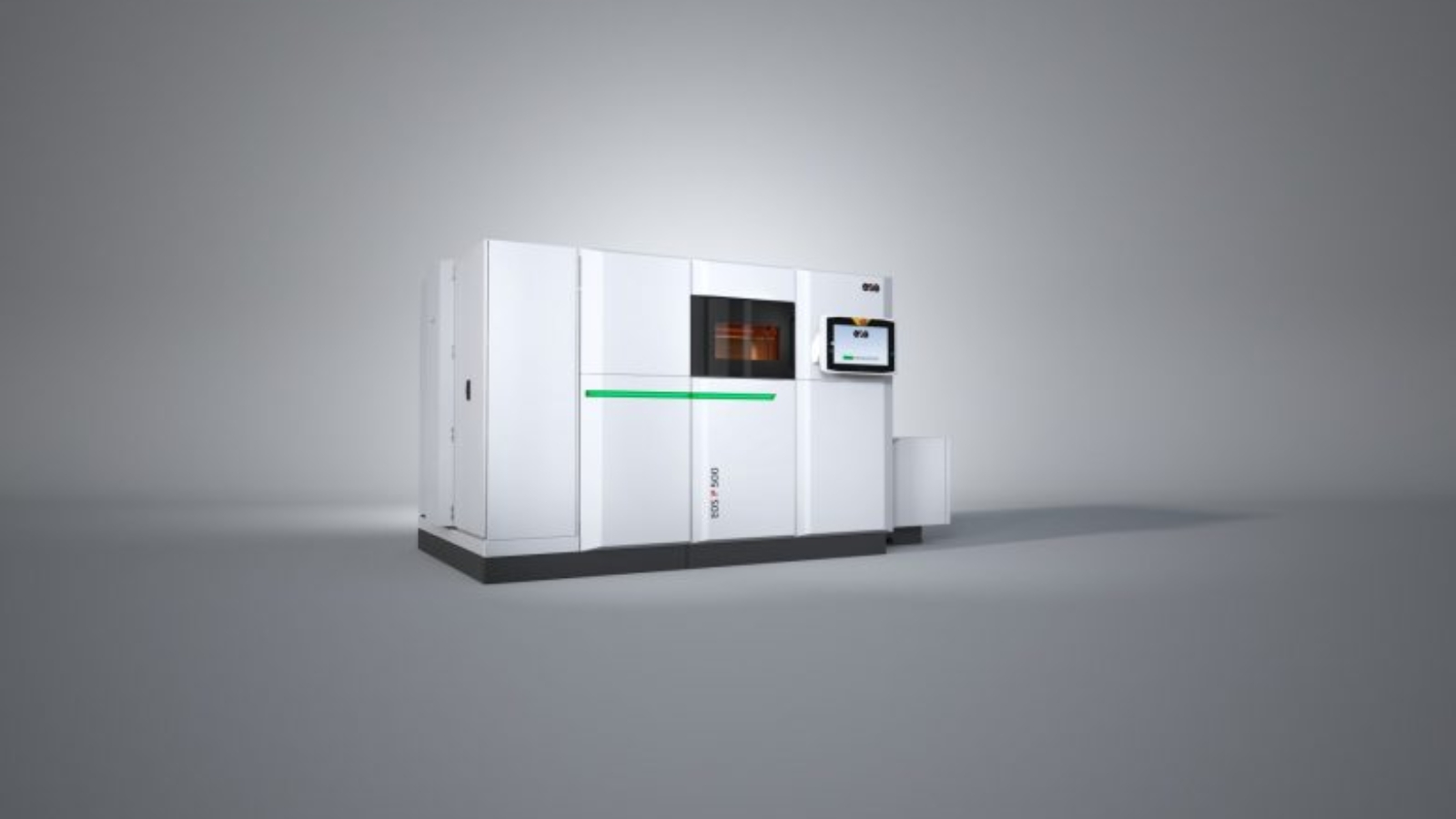EOS, a leading supplier for responsible manufacturing solutions based on industrial 3D printing technology, has completed extensive testing of its EOS P 500 polymer system, assessing production suitability for series applications together with its Austrian customer 1zu1 Prototypen from Dornbirn. Together, both have concluded that the system has the highest overall system effectiveness available on the market in terms of uptime, performance, and quality for industrial 3D manufacturing solutions. As a result, 1zu1 has now purchased two EOS P 500 polymer systems, enabling it to process customer orders even faster.
Hannes Hämmerle, CEO of 1zu1 Prototypen stated: “Our company stands for precise, fast and highest quality industrial production. The EOS P 500 fulfills all requirements for homogeneous and repeatable component quality while keeping production time short.” He continues: “Parts produced on this system have dimensional accuracy very close to that of injection molded parts and can also keep up in terms of productivity. With the EOS P 500 we can produce an exemplary build job of 2,400 pieces in 16 to 17 hours, this is about 25 seconds per part. At the same time, we can process build jobs overnight that are ready to be unpacked the next morning, also enabling very short delivery times.”
David K. Leigh, CTO at EOS, addìed: “The modular design of the EOS P 500 provides increased throughput utilizing automated interfaces and optimized accessories, which will come soon. These features give companies an intelligent and stable technology to manufacture flexibly, reliably and economically.” And he goes on to say: “The system also offers 6-channel heating which allows for better thermal management of the part bed. We have seen a significant decrease in the distortion of warpage critical components. Parts are now produced with better dimensional accuracy regardless of placement in the build.”
Manufacturing on Demand
Increased productivity
The EOS P 500 features a build rate that is twice as fast as the fastest laser-sintering system currently available in the polymer sector (EOS P 396). Numerous factors contribute to this, including two powerful 70-watt lasers for precise energy input into the powder during material melting. The innovative recoater can be precisely controlled and applies a new layer of polymer powder to the build platform at very high speed (up to 600 mm/s).
Another important contribution to a high-quality build process is made by a three-stage filter unit that filters material outgassing and particles from the build area of the EOS P 500. Unlike previous EOS systems, the EOS P 500 brings the material to optimum processing temperature before application, thus shortening the time required for recoating and exposure.
The work steps before and after the actual build process also run much more quickly: Preheating and cooling of the interchangeable frame (with the 3D printed part) after production optionally takes place outside the EOS P 500. Users can start a new production process just fifteen minutes after completing a build job. The system needs to be cleaned less frequently and serviced only once a year, so the uptime of the EOS P 500 is up to 75 percent higher, compared with predecessor systems and competitor models.
Digital production control
The EOS P 500 can be seamlessly integrated into existing MES/ERP systems and at the same time includes a range of solutions for process monitoring and system integration. This enables quality assurance on an industrial scale by evaluating extensive sensors as well as camera-based measurement data (optical and thermal). Users receive important system information, for example on the residual oxygen content or the temperature in the build space. EOSCONNECT MachinePark enables comprehensive and user-friendly monitoring of a company’s own machine pool. All EOS systems are displayed in an intuitive dashboard, allowing customers to collect machine and production data, retrieve it in real time and integrate it into existing IT infrastructures.
You might also like:
iLaser introduces CeraBuilder 3000P for high viscosity slurry ceramic AM: The use of 3D printers to produce ceramic parts is growing rapidly in China. Mainstream ceramic 3D printers are based on light curing technology, which prepares ceramic paste for printing by mixing ceramic powder with photosensitive resins. The light-curing process requires a higher fluidity of the ceramic slurry, and slurries with low viscosity and good fluidity are easier to scrape, replenish and print. But it also means that the ceramic solid content in the slurry is low, and shrinkage rates are more significant during the sintering process.
* This article is reprinted from 3D Printing Media Network. If you are involved in infringement, please contact us to delete it.
Author: VoxelMatters


Leave A Comment